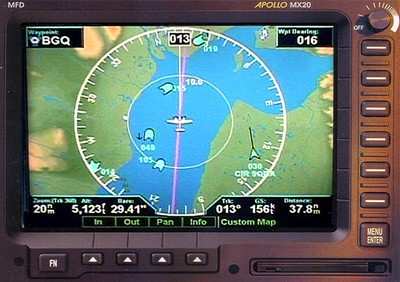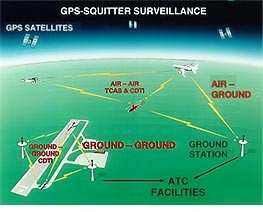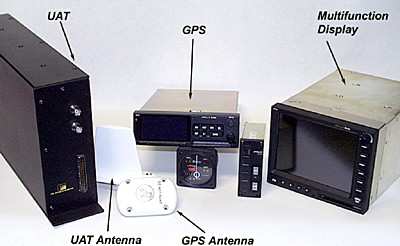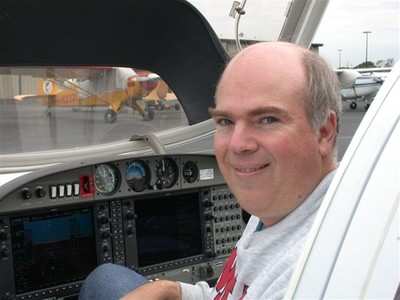Time Is Running Out For Your Comments!
by ANN Guest Contributor Max Trescott
There’s always a marriage of sorts between pilots and Air
Traffic Control, and final vows are about to be exchanged for the
FAA’s NextGen Notice of Proposed Rulemaking (NPRM). The
proposal mandates ADS-B equipment in all aircraft by 2020, but the
deadline for comments is just two weeks away, so now is the time
for you to carefully read this prenuptial agreement.

In the past, the FAA has embarked on other multi-billion dollar
modernization programs that ballooned in size and failed to deliver
as promised. This program could be more successful than those, but
it may need changes to optimize it to deliver the right benefits at
the lowest cost. Whether you own or rent, your money is at stake
and you have until March 3, 2008 to submit comments to the FAA.
To date, the industry has been relatively quiet on the proposal.
That’s surprising since, by FAA estimates, GA aircraft owners
can expect to pay from $4,000 to $17,000 to bring each aircraft
into compliance by 2020. However, if owners think that complying
with the mandate will bring free traffic and weather information
into the cockpit, they haven’t been paying attention, because
it won’t. The full text of the NPRM, which runs 25 pages, can
be downloaded as a pfd file.
The underlying premise is that demand for air travel will double
over the next 20 years, but that the present US Air Traffic Control
system (ATC) is not designed to handle this growth. One constraint
is the use of radar technology. Radar is sufficiently inaccurate at
longer distances that ATC must keep the moving dots separated by
five miles in order to assure that the real airplanes—which
may not be exactly where the dots indicate they
are—don’t collide with each other. Radar is also
expensive to maintain, since it requires large, rotating antennas
sited on leased land.
The goals of NextGen include improving safety and efficiency by
taking advantage of emerging technologies, namely ADS-B. ADS-B uses
GPS receivers on board each aircraft to identify aircraft position
more precisely than is possible using radar. It broadcasts this
position information so that other ADS-B equipped aircraft, surface
vehicles and ground stations are aware of the aircraft’s
position. ADS-B has been successfully demonstrated for several
years in Alaska as part of the Capstone project. Accidents
decreased by 45%, though much of this decline may be attributable
to "ADS-B In" capability, not the "ADS-B Out" capability mandated
in this NPRM. Here’s the difference.
 ADS-B stands for
Automatic Dependent Surveillance-Broadcast. It is Automatic because
unlike a transponder, it broadcasts continuously, not just when
interrogated by radar or a TCAS system. It is Dependent, since it
relies on GPS information. It provides the same Surveillance
function as radar, but does so by Broadcasting its position.
ADS-B stands for
Automatic Dependent Surveillance-Broadcast. It is Automatic because
unlike a transponder, it broadcasts continuously, not just when
interrogated by radar or a TCAS system. It is Dependent, since it
relies on GPS information. It provides the same Surveillance
function as radar, but does so by Broadcasting its position.
There are two ADS-B capabilities. "ADS-B Out," which is the only
one mandated in the NPRM, refers to an aircraft broadcasting its
position and other information. "ADS-B In," which is not being
mandated, allows an aircraft to receive traffic information from
other ADS-B equipped aircraft, surface vehicles, and FAA ground
stations. Weather and other information can be delivered to
aircraft additionally equipped with Flight Information
Services-Broadcast or FIS-B.
If you’re thinking "wait a minute, I’m spending big
bucks for ADS-B Out, but I won’t get any additional
information displayed in my aircraft," you’re absolutely
right, though the option to receive information is available to you
at additional cost. In a sense, ADS-B is a transponder replacement,
except that you won’t be allowed to eliminate the
transponder, which is needed as a back-up to ADS-B—more on
that in a moment. First, let’s talk about benefits.
Proposed NextGen Benefits
A major proposed benefit is that the more accurate data from
ADS-B will allow the five mile en route separation between aircraft
to be reduced, allowing more aircraft to fit into the NAS. Yet as
one commenter to the proposal stated, "reducing enroute and/or
terminal separation standards WILL NOT address the congestion
problem. Traffic congestion is caused by lack of runway,
taxiway, and ramp/gate capacity due to airline ‘hub &
spoke’ scheduling practices." You can view this and all
comments to the NPRM online.

Another proposed benefit is that the FAA can save money by
eliminating some radar installations. However, some of this
potential savings is negated by the need to have a backup plan in
case the ADS-B system fails. This would be needed if, for example,
there were a wide spread outage of GPS service. The proposed backup
plan is to retain all primary radar, which is still needed for
national defense to identify non-participating aircraft, and to
retain approximately half of the secondary radar installations near
the nation’s largest airports. Hence, the mode C transponder
requirement remains in place so that aircraft will be visible to
secondary radar, when needed for backup.
Clearly, the costs and benefits are asymmetrical. The FAA may
save money by eliminating some radar installations, but
that’s offset by the requirement for pilots to spend
thousands of dollars to equip each aircraft with ADS-B. Recognizing
this, the NPRM does solicit comments on how to subsidize the costs
to pilots and some state legislatures are considering this. On the
benefits side, the FAA may succeed in squeezing more aircraft into
the en route structure, but pilots who opt for the minimum required
ADS-B Out requirement derive little benefit, except for continued
access to the NAS.
ADS-B Regulatory Requirements
 ADS-B wouldn’t be
required everywhere; the requirements are similar to that of mode C
transponders. To review, mode C transponders are required when
operating above 10,000 feet MSL, within 30 miles of some, mostly
Class B airports, and when flying under, above or through Class B
and C airspace. There is an exclusion related to flying within 30
miles of Class B airports for "any aircraft which was not
originally certificated with an engine-driven electrical system"
and the ADS-B proposal includes the same exclusion. Mode C
transponders are not required above 10,000 feet if one remains
within 2,500 feet of the ground, however the ADS-B proposal does
not include that exclusion.
ADS-B wouldn’t be
required everywhere; the requirements are similar to that of mode C
transponders. To review, mode C transponders are required when
operating above 10,000 feet MSL, within 30 miles of some, mostly
Class B airports, and when flying under, above or through Class B
and C airspace. There is an exclusion related to flying within 30
miles of Class B airports for "any aircraft which was not
originally certificated with an engine-driven electrical system"
and the ADS-B proposal includes the same exclusion. Mode C
transponders are not required above 10,000 feet if one remains
within 2,500 feet of the ground, however the ADS-B proposal does
not include that exclusion.
The ADS-B proposal further mandates that aircraft operating in
Class E airspace over the Gulf of Mexico, from the coastline out to
12 NM and above 3,000 feet MSL, would require ADS-B Out. This area,
which contains hundreds of helicopters servicing thousands of
offshore oil wells, doesn’t have radar coverage, so ADS-B
would enhance surveillance in this area.
A seemingly odd requirement is that aircraft flying above FL240
will use a different ADS-B system, known as 1090ES, than many lower
flying aircraft. Presumably, this is to rationalize the U.S. ADS-B
proposal with that of existing 1090ES standards in some other
countries. Thus, high flying aircraft traveling between continents
could have the same standard ADS-B system, regardless of where they
fly.

The rub is that this equipment has a lower bandwidth and cannot
accommodate FIS-B capabilities, such as the display of weather in
the cockpit. Thus, another ADS-B unit, called a Universal Access
Transceiver (UAT) and operated on a different frequency, is
proposed as an alternate way for lower flying aircraft, that are
presumably more interested in these services, to comply with the
ADS-B mandate. This complicates implementation of the proposal, as
aircraft using these two different types of ADS-B equipment
won’t be able to directly communicate and "see" each other.
Hence, the proposal includes many ADS-R translators, which are sets
of crosslinked, ground-based transceivers that re-broadcast all
ADS-B signals on both frequencies. This should allow all ADS-B
equipped aircraft, regardless of the standard they use, to see each
other—except when they are not within line of sight of a
ground-based ADS-R site.
Proposal Comments
Reading through the comments, many of them well thought out, is
enlightening. Here are a few. The NTSB wonders why the proposal
doesn’t mandate ADS-B In, which could provide additional
safety information to pilots that would prevent incidents such as
runway incursions. An individual points out that in many cases, the
cost to install ADS-B represents one tenth to one third of the
total value of older aircraft. A few people commented on security
issues, including the lack of data encryption that might allow
ADS-B to be used as a tool for terrorists to target aircraft.
Several comments focused on the requirement for ADS-R to handle
the two different ADS-B standards. One said "The added risk of
faults, failures, and ‘aged data’ (latency) in the
additional computer hardware and software to accommodate two
separate links (not to mention the additional infrastructure cost)
makes the proposed implementation ludicrous."

Another individual, commenting on the illusory benefits of
equipping with just the minimum required ADS-B Out, said "It's
totally unclear what benefits, if any, will accrue to users if they
equip with only the proposed ADS-B Out option."
Get Involved: Send Your Comments Today
While ADS-B holds tremendous promise, the current proposal
represents a compromise that could be improved upon. Clearly the
FAA has chosen to reduce pilot cost by not mandating ADS-B In, even
though there’s little benefit to pilots of equipping with
just ADS-B Out. Many of the services, such as weather, that would
make ADS-B In valuable require equipment that differs from the
ADS-B standard, used in some other countries. Thus two different
standards were proposed, which increase the cost of the ground
infrastructure and decrease overall system performance. However,
since the time when ADS-B was first developed, some of these
services, such as weather, have become available separately from
third party providers. Meanwhile, the ADS-B freight train is
hurtling down the tracks, as the contract has already been let for
installing the ground infrastructure.

Any time billions are being spent—both of taxpayer money
and of aircraft owners’ money—it pays to take a close
look. Final comments on the proposal are due March 3, 2008, so read
the proposal carefully. Then send your comments to AOPA, or click here to enter them yourself
online. Just as in a wedding ceremony, you need to
"Speak now or forever hold your peace."
Max Trescott (shown above) is an experienced CFI, author,
and aviation educator.
 Airborne 04.16.24: RV Update, Affordable Flying Expo, Diamond Lil
Airborne 04.16.24: RV Update, Affordable Flying Expo, Diamond Lil ANN's Daily Aero-Term (04.20.24): Light Gun
ANN's Daily Aero-Term (04.20.24): Light Gun Aero-News: Quote of the Day (04.20.24)
Aero-News: Quote of the Day (04.20.24) Aero-News: Quote of the Day (04.21.24)
Aero-News: Quote of the Day (04.21.24) ANN's Daily Aero-Term (04.21.24): Aircraft Conflict
ANN's Daily Aero-Term (04.21.24): Aircraft Conflict









